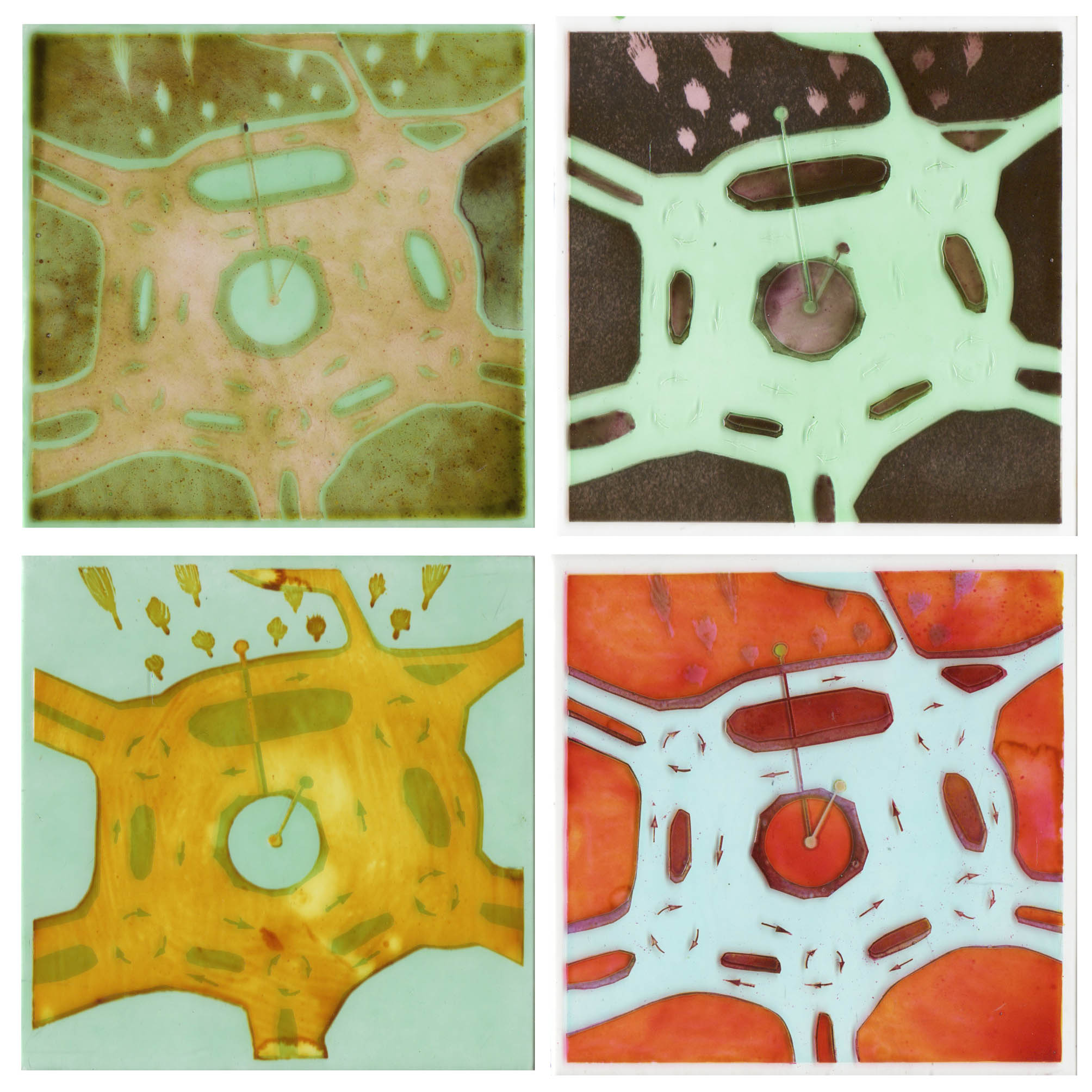As fellow photographers of stained glass in churches will know, it's easy to get a good picture of a detail. It's possible to find something in the window that you like, even if the overall composition is a bit of a failure. But to me, the design of the whole window and how it works in the building is the crucial thing. These examples below show five of the magnificent windows in St. James' Church, Trowbridge, by two important nineteenth & early twentieth century firms, Powells of Whitefriars and Joseph Bell of Bristol. The church has a comprehensive guide to the stained glass which tells you about the makers and donors as well as the iconography.
Duke Chapel, The St. James Window - Powells 1932. Memorial to the four members of the Palmer Family, wool manufacturers, who died on active service. Shows the life and legends of St. James.
The details that interest me are less about the story telling and more about the glass painting. I am often drawn to the landscapes behind the figures, such as the garden in the St. James window (above) and the mountains behind St. Stephen (below). However, I think you'll agree that the St. James window is a mess, while the earlier Te Deum window (below) is beautifully balanced. With not too much white glass and delicate colouring, this window sends out a glow from behind the altar.
East Window - Powells 1910. Memorial to the churchwarden Burchell Rodway. "Te Deum Laudamus".
Looking at the windows from a distance, I found the earlier window by Powells (below) the most satisfying. I love the combination of geometries in the pattern-making, where circles are on diamond backgrounds within vague octagons, leaving rounded sections between for the historical figures. As you can tell, I care more about the shapes between them than the identity of the figures.
Baptistry Window - Powells 1896. Memorial to the wool Merchant Alexander Mackay showing historical characters linked to Trowbridge.
Wyke Chapel Window - Joseph Bell 1847. Memorial to the wool manufacturer John Clark. "Atonement for the sins of mankind by Christ's death and resurrection".
The comparison between those three subtly coloured post Arts & Crafts windows and these two earlier ones by Joseph Bell is startling. They are full of the sorts of detail that I was told (when a student) you are not supposed to do in stained glass - 3d effects, illusionistic space, backgrounds that pop forwards - and they use the most modern vivid colour schemes. The row of angels in the window above is wonderful, the composition ordered but very uplifting. The west window (below) is absolutely amazing, I kept turning to look at it. From the other end of the church the clear, bright colours hold as if there were a light box behind, even on a dull day.
West Window - Joseph Bell 1847. "Thanksgiving for a good harvest". Solomon praying for a good harvest; gathering manna in the wilderness; Moses striking the rock with water gushing out; the ravens bringing food to Elijah.















